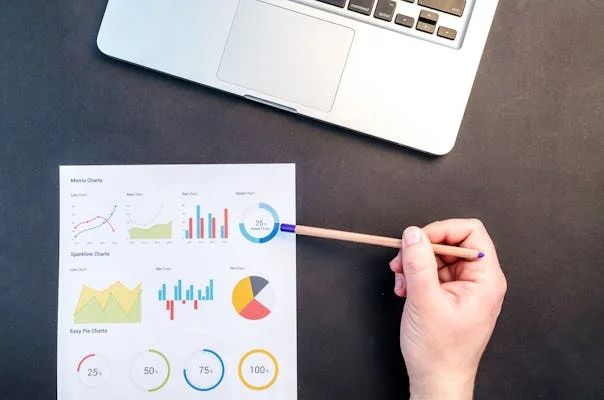In today’s digital age, business cards remain a vital tool for professionals. The standard size of 2.5 x 3.5 inches makes them easy to carry and exchange, leaving a lasting impression. In this guide, we’ll explore why 2.5 x 3.5 business cards are essential, their benefits, design tips, and how they can help elevate your brand.
Why 2.5 x 3.5 Business Cards Are the Standard Size
2.5 x 3.5 inches is the most commonly used size for business cards because of its convenience and practicality. It fits perfectly into wallets, cardholders, and pockets, making it easy for professionals to keep and share.
Practicality and Portability
- Fits Anywhere: These cards fit into wallets, purses, and cardholders.
- Standardized Size: The 2.5 x 3.5-inch size is universally recognized and expected.
- Durable: The size helps balance the card’s durability and space for information.
Benefits of Using 2.5 x 3.5 Business Cards
Business cards might seem simple, but their impact can be profound. Here are some of the key benefits of opting for the standard 2.5 x 3.5 size.
Professional Appearance
Business cards offer a professional look when meeting potential clients or partners. They provide a tangible way for someone to remember you and your services.
- First Impressions Matter: A well-designed card reflects your professionalism.
- Easy to Read: The 2.5 x 3.5 size offers enough space for essential information.
- Branding Opportunity: Your business card is part of your branding, helping clients recognize you.
Versatility in Design
The 2.5 x 3.5-inch size offers ample space for creativity without being overwhelming. This balance makes it ideal for logos, contact details, and creative elements.
- Ample Space for Creativity: There’s enough room for logos, colors, and graphics without overwhelming the recipient.
- Adaptable to Any Industry: Whether you’re a lawyer, designer, or entrepreneur, the design can be tailored to your industry.
How to Design the Perfect 2.5 x 3.5 Business Card
Creating a business card that stands out starts with careful design. Consider the following key elements when designing your card.
Key Elements to Include
- Logo: Make sure your logo is clear and easy to recognize.
- Contact Information: Always include your name, job title, email, and phone number.
- Website and Social Links: Adding your website and social media profiles helps create more ways to connect.
Design Tips
- Keep It Simple: Avoid overcrowding the card. A clean design leaves a better impression.
- Use Readable Fonts: Ensure that the font size is readable, even for people with weaker eyesight.
- Stick to Your Branding: Keep the colors and logo consistent with your overall branding.
Materials and Printing Options for 2.5 x 3.5 Business Cards
The material and printing method you choose can further enhance your card’s look and feel.
Popular Material Options
- Standard Cardstock: Affordable and professional, this is the go-to material for most business cards.
- Laminated Cards: Laminated finishes offer a more durable and polished look.
- Recycled Paper: For eco-conscious businesses, recycled paper provides a green option.
Printing Techniques
- Offset Printing: Produces high-quality and vibrant results.
- Digital Printing: More cost-effective for smaller quantities but still produces professional results.
- Embossing or Foil Stamping: These techniques add a tactile, high-end feel to your cards.
Advantages of Carrying 2.5 x 3.5 Business Cards
Having a stack of business cards on hand can make networking easier. Let’s look at why you should always carry business cards.
Convenience at Networking Events
Business cards offer a quick and easy way to share your contact information with someone you meet at an event, conference, or casual setting.
- Quick Contact Sharing: No need to rely on digital tools or remember names.
- Memorable Touchpoint: A well-designed card can leave a lasting impression.
Easy to Distribute and Collect
Whether you’re at a networking event or a casual meeting, you can effortlessly hand out or receive business cards.
- Instant Exchange: Quickly share contact details without needing to pull out your phone.
- Networking Made Easy: Handing out a card makes the interaction more personal.
Customizing 2.5 x 3.5 Business Cards for Your Industry
Different industries have different design and material preferences for business cards. Customizing your card to fit your industry can enhance its impact.
Industry-Specific Customization Ideas
- Creative Industries: Use bold colors, eye-catching fonts, and unique materials.
- Corporate Professionals: Stick to sleek designs with minimalist elements.
- Small Business Owners: Highlight your logo and business website prominently.
Table: Quick Comparison of Printing Techniques for 2.5 x 3.5 Business Cards
| Printing Technique | Pros | Cons | Best For |
|---|---|---|---|
| Offset Printing | High-quality, vibrant colors | More expensive for small runs | Large orders, premium finishes |
| Digital Printing | Cost-effective for small quantities | Slightly lower quality | Small orders, fast turnaround |
| Embossing | Adds a tactile, premium feel | More expensive | Luxury brands, high-end business |
| Foil Stamping | Metallic and shiny finish | Pricey | Premium business cards, special events |
Conclusion
Business cards may be small, but their impact is significant. By opting for the standard 2.5 x 3.5-inch size, you ensure your card is practical, professional, and easy to share. With the right design, materials, and printing techniques, your business card can leave a lasting impression.
FAQs about 2.5 x 3.5 Business Cards
1. What is the standard size of a business card?
The standard size for a business card is 2.5 x 3.5 inches (or 64 x 89 mm), which fits easily into wallets and cardholders.
2. Why is 2.5 x 3.5 inches the preferred size for business cards?
This size is preferred because it is universally accepted, practical for carrying, and offers enough space for essential contact details while maintaining a professional appearance.
3. Can I use a different size for my business card?
Yes, you can customize your business card to different sizes, but it’s important to consider that non-standard sizes may not fit into standard cardholders or wallets.
4. What should I include on my 2.5 x 3.5 business card?
Key information to include is your name, job title, contact details (phone number, email), company logo, and website or social media profiles.
5. Which materials are best for 2.5 x 3.5 business cards?
Common materials include standard cardstock, recycled paper, and laminated finishes. The choice of material depends on your budget and the desired look and feel of the card.
6. What printing method is best for business cards?
Offset printing is ideal for large orders with premium quality, while digital printing works well for smaller, cost-effective orders. Foil stamping or embossing can add a luxury touch to your cards.





